About Wood Names
One of the issues you will encounter when buying wood is the inaccuracy of common wood names. Think of wood names as nicknames that may or may not be a good representation of the actual wood. To get a better idea of this, consider a person named William Smith. He may also go by Will, Willy, Bill, Billy, Coach, etc., but none of those are his real name. Take mahogany as an example. Genuine mahogany is called Honduran mahogany, big-leaf mahogany, Brazilian mahogany, and American mahogany. These are all nicknames for Swietenia macrophylla, the scientific name for “genuine mahogany.” Another catch here is the variation in wood across the country. For example, west coast and east coast ash may differ. The scientific name is critical when you need a specific species. For this reason, this list includes the scientific names of the species to help you on your quest. For more information on wood species, either those mentioned in the list below or any other wood types, check the website Wood Database for comprehensive information on over 600 species of wood.
Our Photos
Wood is not man-made. If it were, it would always be consistent in appearance, color, and how it acts when machined. Perhaps you’ve struggled to find boards that matched in color for those drawer fronts or tabletop you’re making. The wood photos shown here may not look exactly like the wood of that name that you’re familiar with. There are reasons for that. First off, is it the same wood? As mentioned in the section above, many kinds of wood have the same name but may be a different genus and/or species. Geography, which translates to growing conditions for the tree, can also affect the appearance of the wood.Logs to Lumber: How Cutting Affects the Look
Another aspect that significantly affects the appearance is how the boards were cut. The boards are cut from a log in one of three ways: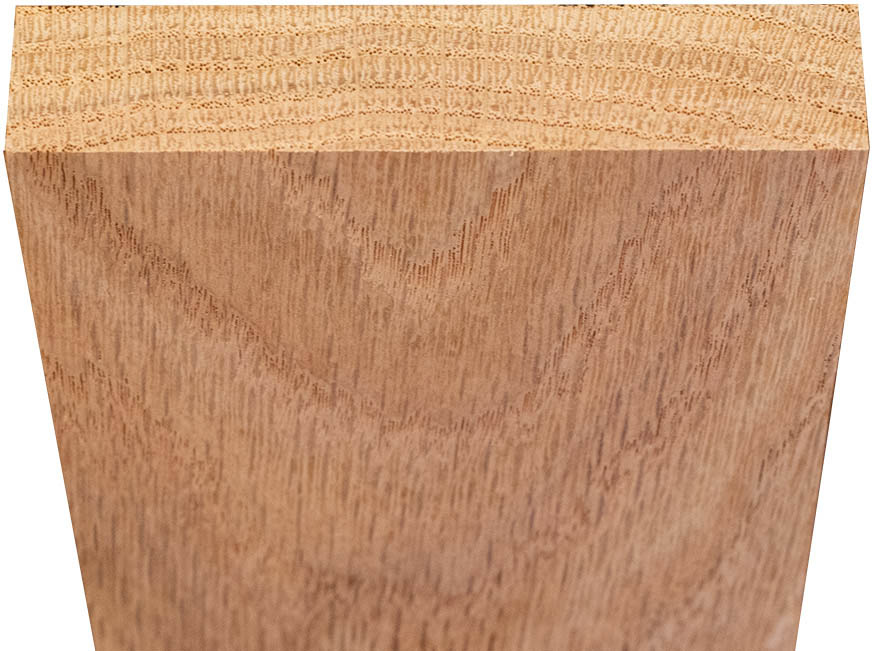
1. Plain (or flat) sawn. This can be recognized by the arched grain shapes on the face of the wood and the growth rings visible in the cross-section.
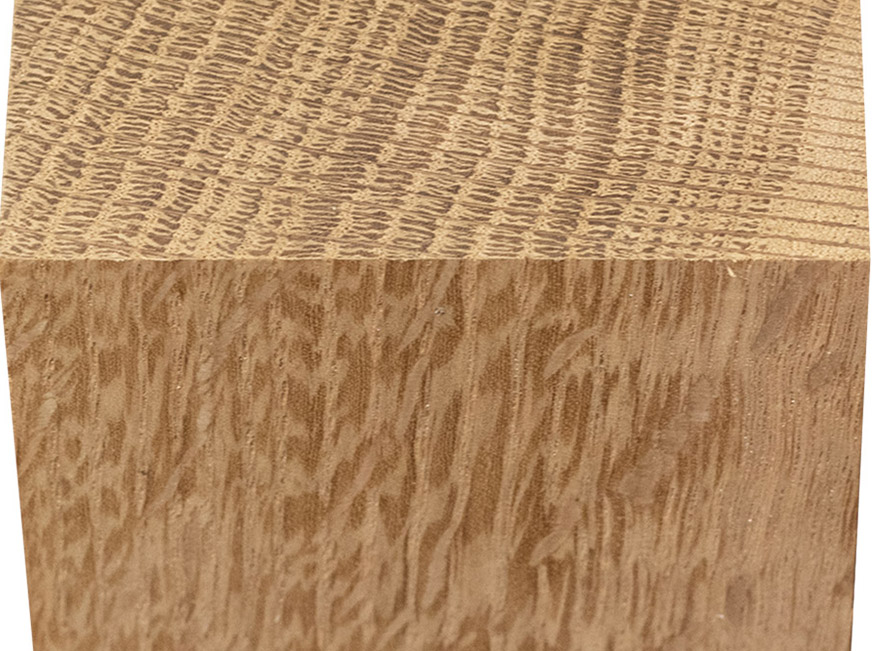
2. Quarter sawn. There will be no arches on the wood’s face. The grain will appear relatively straight and mostly run vertically down the face. If you look at the cross-section of quarter sawn wood, you see the growth rings as lines going nearly perpendicular to the face of the board.
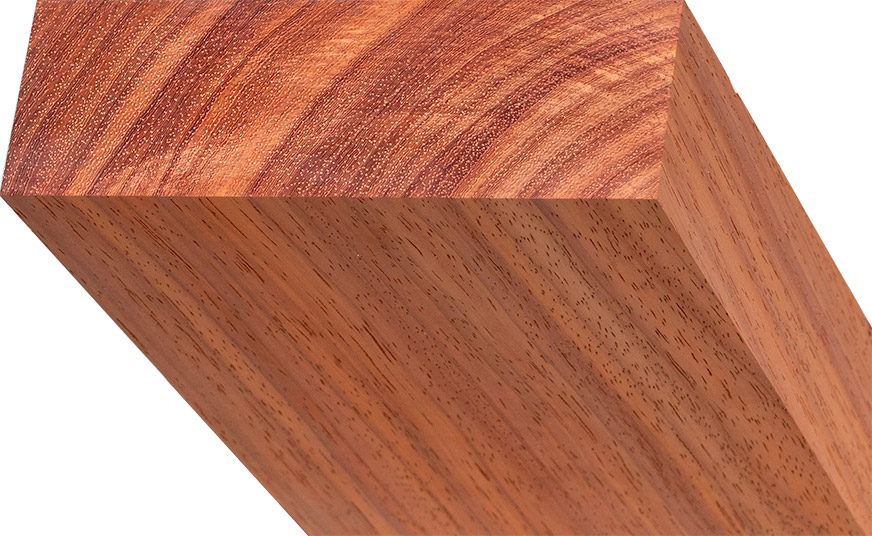
3. Rift sawn. This means that the cut is in-between flat and quarter sawn. When looking at the face, it will appear similar to quarter sawn wood, but the lines on the face may no longer be parallel to the edges of the board.
Plain sawn lumber is the most common, followed by quarter sawn. Quarter sawn and rift sawn material is more expensive than plain sawn. As you select your material, it’s important to understand the difference between plain sawn and quarter sawn material as it affects the pricing, look, and wood movement. Lastly, there’s availability to consider: Californians won’t have access to the same species as woodworkers in Ohio. You may get similar wood (by common name), but not always the same species.Using This List
There is, intentionally, a LOT of info here. Don’t try to digest it all at one time. Save this guide and refer to it when you’re making material selections.Understanding the Descriptions
Eleven comments are provided with each wood. After the common name, the names in parentheses may be the complete common name or alternate common names. Then, after the common name, you will see:1. Scientific name: If you want a specific wood species, it is essential to know the scientific name of the described wood. If your needs are such, you may need to ask for that wood by that name. (Note: If you see the letters “SSP,” that means that there are several species under that family that are sufficiently similar, and there is no need to identify them separately.)
2. Country of origin: This will either be Exotic or Domestic. Some lumberyards only deal in Domestic wood. Some woods, such as oak, are grown in the United States and throughout Europe. Because oak is grown in the US, they may not carry European oaks, even if they carry other Exotics.
3. Type: Either deciduous (hardwood) or evergreen (softwood). Hardwoods come from deciduous trees, and softwoods come from evergreen trees. If you see a reference to wood being soft, that does not necessarily mean it is a softwood. The best example is balsa wood—a hardwood that happens to be very soft.
4. Color: This covers the generic colors of the wood and may also add some comments about the wood grain.
5. Hardness: This hardness is the hardness of the material, not necessarily the strength. To provide a uniform measurement, we refer to the Janka scale. This measures how much force must be applied to a steel ball (0.444˝ diameter) into a block of wood to the depth of half the ball’s diameter. The unit is lbf, which stands for pounds-force. Use this as a way to measure a wood’s wear resistance.
6. Movement: Wood expands and contracts during changes in humidity. The catch here is that the amount of change is not consistent in all directions depending on how the wood was cut. In addition, every wood changes a different amount. There are two numbers for each wood: Radial (which is from the center of the tree outward) and Tangential (which you see when you cut a flat layer off the side of the tree). These numbers are the Dimensional Change Coefficient (DCC) and are used to calculate the amount a specific wood expands or contracts due to changes in humidity. You can learn how to use these numbers and see more information on wood movement in the companion article “Understanding Wood.”
7. Modulus of elasticity: This is a measurement of the elasticity of the wood (bending) and can be used to identify boards that can support weight better than boards with lower numbers. The unit is lbf/in2, or pounds-force per square inch. There is no direct relationship between hardness (#4) and the modulus of elasticity. Some woods can be soft, but able to support a reasonable amount of weight. This is important when selecting materials for shelving. To get the most out of any wood, regardless of its modulus of elasticity, there is additional information on shelving in the companion article “Understanding Wood.”
8. General use: Represents the kinds of uses this wood is known for. If you choose to use wood typically seen in construction, there probably is a reason it is not used in the visible parts of furniture.
9. Watch out for: This points out issues you may need to consider or work around to finish your project.
10. Cost: This is intended to give you a relative perspective on each wood, not a dollar amount. Check suppliers in your area for pricing.
11. Comments: Extra thoughts and comments on the wood being discussed.

The Wood List
Ash (White Ash, American Ash)
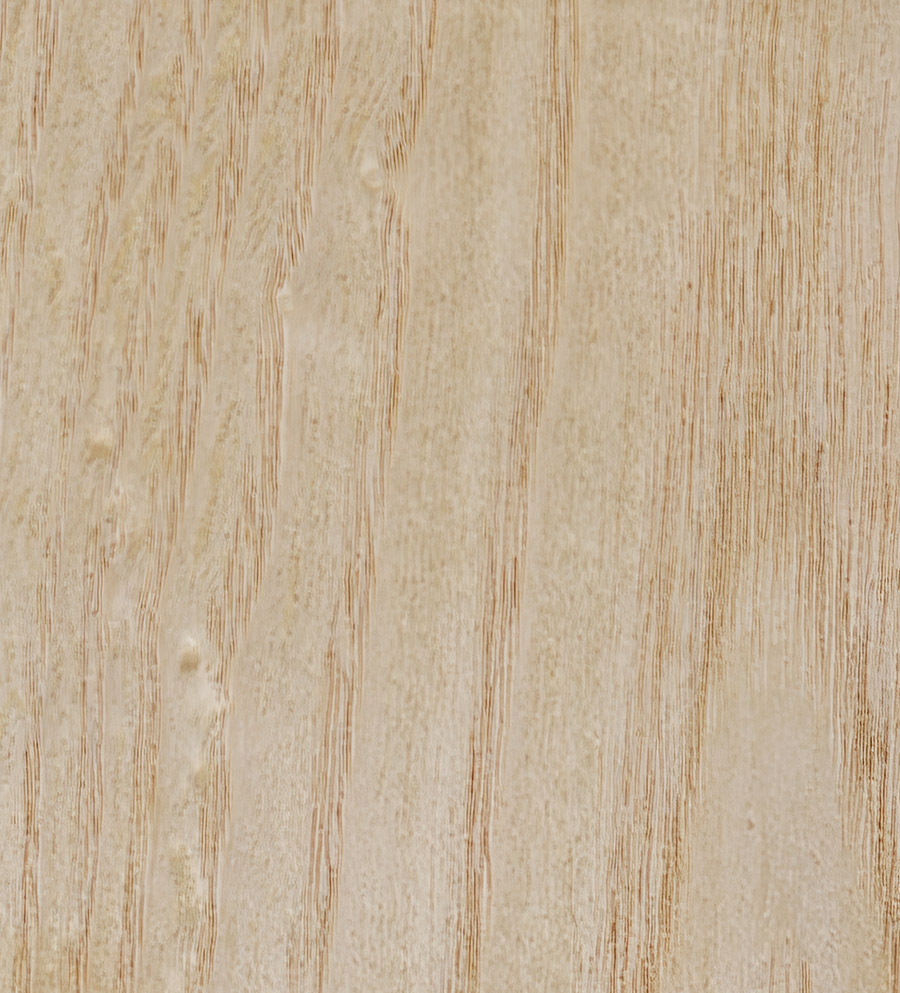
1. Scientific name: Fraxinus americana
2. Wood origin: Domestic
3. Type: Deciduous
4. Color: Very light to medium brown but can darken over time. Grain is typically straight, though it can be curly or figured.
5. Hardness: Medium hard (used in baseball bats). Very tough and suitable for shelving (Janka hardness ranges from 1,320 lbf – 1,480 lbf).
6. Movement (DCC): Radial: 0.00169, Tangential: 0.00274
7. Modulus of elasticity: 1,740,000 lbf/in2
8. General use: Very straight grain and therefore suitable for splitting. Often used in furniture and is good for steam bending. Excellent for flooring. Excellent shock absorption, such as for baseball bats and tool handles.
9. Watch out for: Easily split; more flammable than other woods; open grain, which needs to be filled if you want a solid, shiny appearance. It is unsuitable for outdoor use as it can rot and is vulnerable to insects.
10. Cost: Generally low and one of the least expensive utility hardwoods.
11. Comments: Easy to work and is similar to white oak. However, it is unsuitable for outdoor use or near water as it can start to warp. Because of its open pores, the particulate matter in a stain will collect in the pores. To work around this, a gel stain or dyeing is recommended. Ash is currently under siege by the emerald ash borer (EAB), but work is being done to hybridize EAB-resistant trees.
Basswood (American Basswood, Lime, Linden)
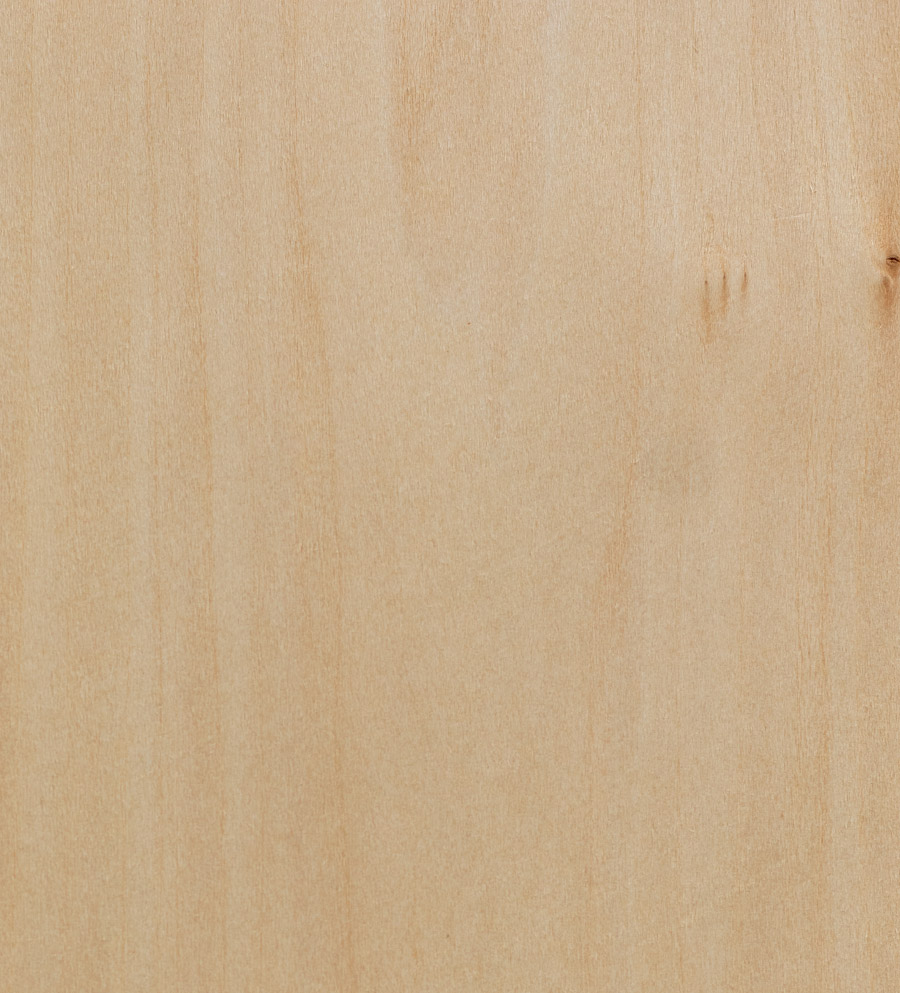
1. Scientific name: Tilia americana
2. Wood origin: Domestic
3. Type: Deciduous
4. Color: Pale white to light brown
5. Hardness: Soft (Janka scale: 410 lbf)
6. Movement (DCC): Radial: 0.00230, Tangential: 0.00330
7. Modulus of elasticity: 1,460,000 lbf/in2
8. General use: Carving, musical instruments, veneer, plywood, and wood pulp/fiber products. Excellent for carving due to its softness (see the Janka scale above). Because of its lightness, it is often used for blinds. It has excellent acoustic qualities and is used for string and blown instruments.
9. Watch out for: Not suitable for steam bending and doesn’t hold nails well (too soft).
10. Cost: Very accessible for both lumber and carving blanks, so not expensive.
11. Comments: It is an excellent wood for wood carving as it has an even-textured grain, and the colors and grain do not fight with the actual carving. Not suitable for outdoor use.
Beech (American)
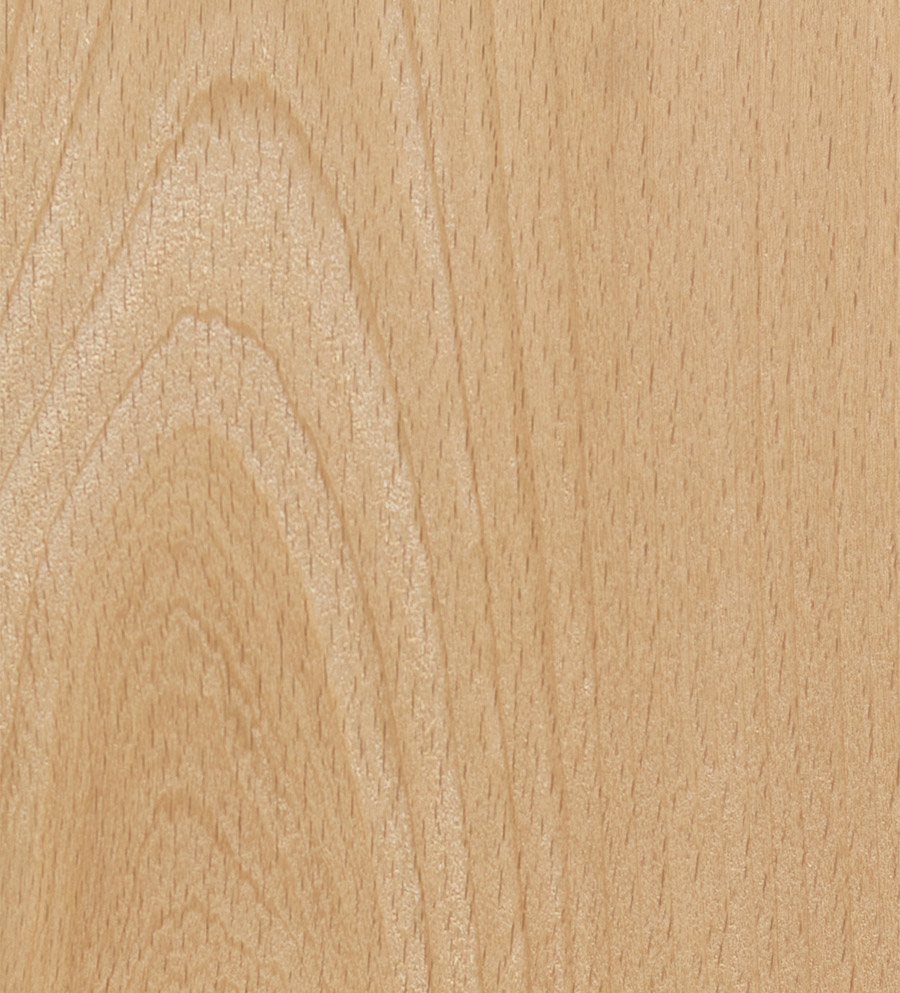
1. Scientific name: Fagus grandifolia
2. Wood origin: Domestic
3. Type: Deciduous
4. Color: Sapwood is much lighter (sometimes white), and the heartwood is pale to yellow-brown. The quarter sawn boards show tiny pink, silvery, or dark brown flecks. Like birch, the pores are tiny and evenly spread throughout the sapwood.
5. Hardness: Hard and strong, but brittle, so not recommended for long pieces. Good furniture wood (Janka scale: 1,300 lbf).
6. Modulus of elasticity: 1,720,000 lbf/in2
7.Movement (DCC): Radial: 0.00190, Tangential: 0.00431
8. General use: Machines and glues well, be careful to plan for extra wood movement. Too brittle for long pieces but can be used when short, strong pieces are needed. Steam-bends well. It can be used for food containers as it has no odor or taste.
9. Watch out for: Internal moisture dries quickly, so plan on shrinkage. It is not rot-resistant, and insects love it.
10. Cost: Low
11. Comments: This is a close-grained hardwood that is relatively plain. It machines easily and well, excellent with hand tools, but occasionally has a section that doesn’t behave well and is best cleaned up with a scraper. It can be steam-bent easily. It’s recommended to mill it in stages. So, bring it close to the desired dimension and allow the wood to sit for some time due to potential wood movement. Not very good for outdoor use. It is a good value and is less expensive than hard maple, where it can be used.
Birch (Yellow)
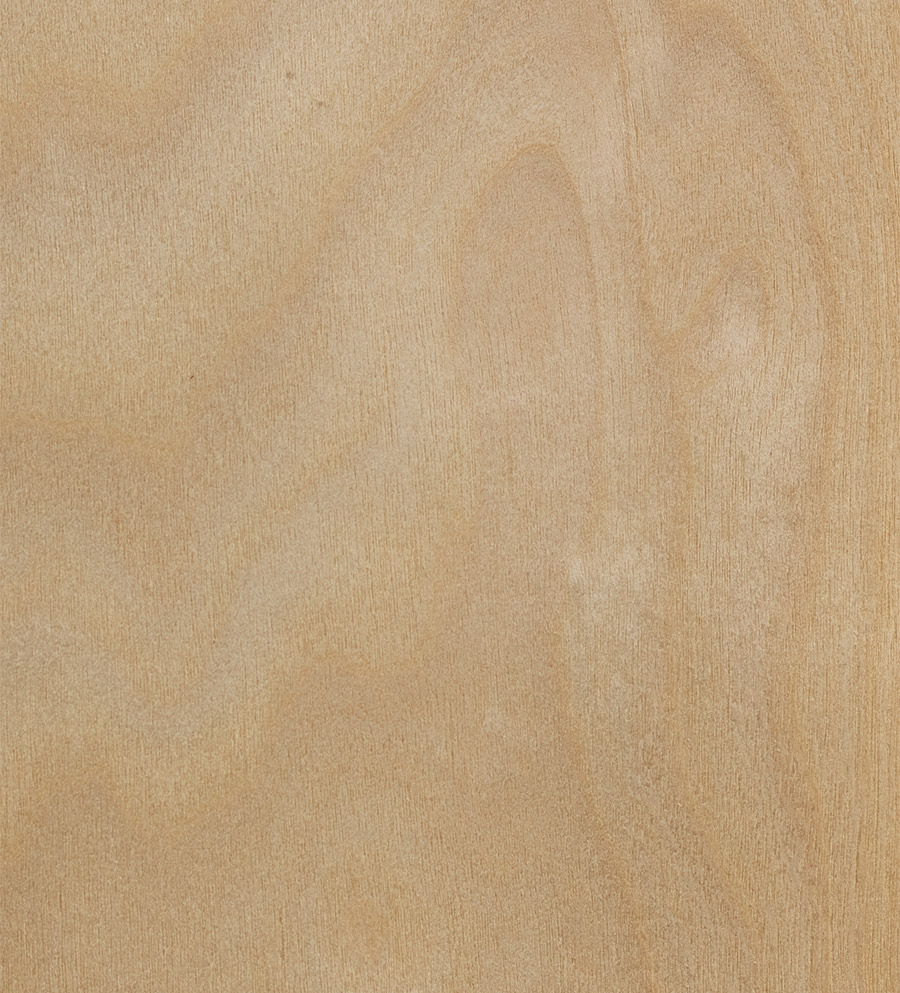
1. Scientific name: Betula alleghaniensis
2. Wood origin: Domestic
3. Type: Deciduous
4. Color: Very light brown and featureless. Nearly white sapwood. Little change in growth rings, so birch has a dull uniform appearance.
5. Hardness: Moderate (Janka scale: 1,260 lbf)
6. Modulus of elasticity: 2,010,000 lbf/in2
7. Movement (DCC): Radial: 0.00256, Tangential: 0.00338
8. General use: Used to make Baltic Birch plywood, boxes, turning, interior trim, and small specialty items. It is often used as the internal woods in furniture (due to its strength) but then covered over. It is often used for toothpicks.
9. Watch out for: Boards with erratic grain may have considerable tearout. The birch can yellow over time.
10. Cost: Generally economical, but figured boards will cost more.
11. Comments: Most birches have the same genus (Betula). They can be used for furniture, but the lack of features makes them less used. The birch tree can often be recognized by its white bark.
Bubinga (Kevazingo)
 (Image is quarter sawn)
(Image is quarter sawn)
1. Scientific name: Guibourtia spp. (G. demeusei, G. pellegriniana, G. tessmannii)
2. Wood origin: Exotic
3. Type: Deciduous
4. Color: Heartwood can be pink, red, or brown and has purple streaks. Fades to yellow or brown with a reddish tint. Very fine, tight-grained. Sapwood is distinctively lighter.
5. Hardness: Excellent strength-to-weight ratio (Janka scale: 2,410 lbf).
6. Modulus of elasticity: 2,670,000 lbf/in2
7. Movement (DCC): Radial: 0.0021, Tangential: 0.0030
8. General use: Fine furniture, decorative veneers, inlay. Often a substitute for rosewood.
9. Watch out for: Some boards can have high silica content that can dull cutting tools. During cutting, there may be an unpleasant odor that does go away. Bubinga requires slow drying, so be wary of cracks and warping. If you do extensive milling, do not mill to spec. Rather mill part-way to spec and let sit and reacclimate before final milling.
10. Cost: This will probably increase due to international efforts to save the species.
11. Comments: The tree can often be wide and tall, providing large pieces. They are often called African rosewood because of their similarity to Honduras rosewood. There are gum pockets that can affect glue drying. Easy to work with using hand and power tools. Relatively low in wood movement and is stronger, stiffer, and harder than red oak. You must pre-bore before using screws and nails. It can be used for both indoor and outdoor use.
Cedar (Aromatic Red Cedar, Eastern Red Cedar)
1. Scientific name: Juniperus virginiana
2. Wood origin: Domestic
3. Type: Evergreen
4. Color: Heartwood is reddish-brown or violet-brown. Sapwood is pale and can appear throughout the heartwood.
5. Hardness: Somewhat hard (Janka scale: 900 lbf)
6. Modulus of elasticity: 880,000 lbf/in2
7. Movement (DCC): Radial: 0.00106, Tangential: 0.00162
8. General use: Used for closets and chests because of its scent. Also, suitable for outdoor furniture as it is resistant to decay and insects.
9. Watch out for: Prone to splitting. It can split down the grain (so pre-drill for both nails and screws) and is likely to have more tearout than other woods. Due to its strong aromatic odors, some people may be allergic to the dust.
10. Cost: Moderately inexpensive
11. Comments: This is a member of the cypress family. Resists rot and is suitable for outdoor furniture, shingles, exterior siding, crates, and boats. Use polyurethane or lacquer as the resins can cause finishing issues. Absorbs noise well, so good for soundproofing. Natural insect repellent.
Cedar (Western Red Cedar)
1. Scientific name: Thuja plicata
2. Wood origin: Domestic
3. Type: Evergreen
4. Color: Freshly cut is light reddish-brown but quickly fades to silver-gray. Sapwood is yellowish-white.
5. Hardness: Soft (Janka scale: 350 lbf)
6. Modulus of elasticity: 1,110,000 lbf/in2
7. Movement (DCC): Radial: 0.00111, Tangential: 0.00234
8. General use: Used for closets and chests because of its scent. Also used for roofs and shiplapping.
9. Watch out for: Prone to splitting, scratching, and denting. It will fade over time and requires constant maintenance, especially outdoors.
10. Cost: Moderately inexpensive
11. Comments: Resists rot and is suitable for outdoor furniture, shingles, exterior siding, crates, and boats. Absorbs noise well, so good for soundproofing. Natural insect repellent. Consider using this for cooking “plank salmon.”
Determining the Differences Between Aromatic Red Cedar and Western Red Cedar:
There are obvious color differences, but to definitively separate the two, cut into the cedar with a saw, rasp, or file and smell the wood. If it smells like a freshly sharpened pencil, it’s Western Red Cedar. If it smells like a cedar chest, it’s Aromatic Red Cedar.Cherry (Black Cherry, American Cherry)
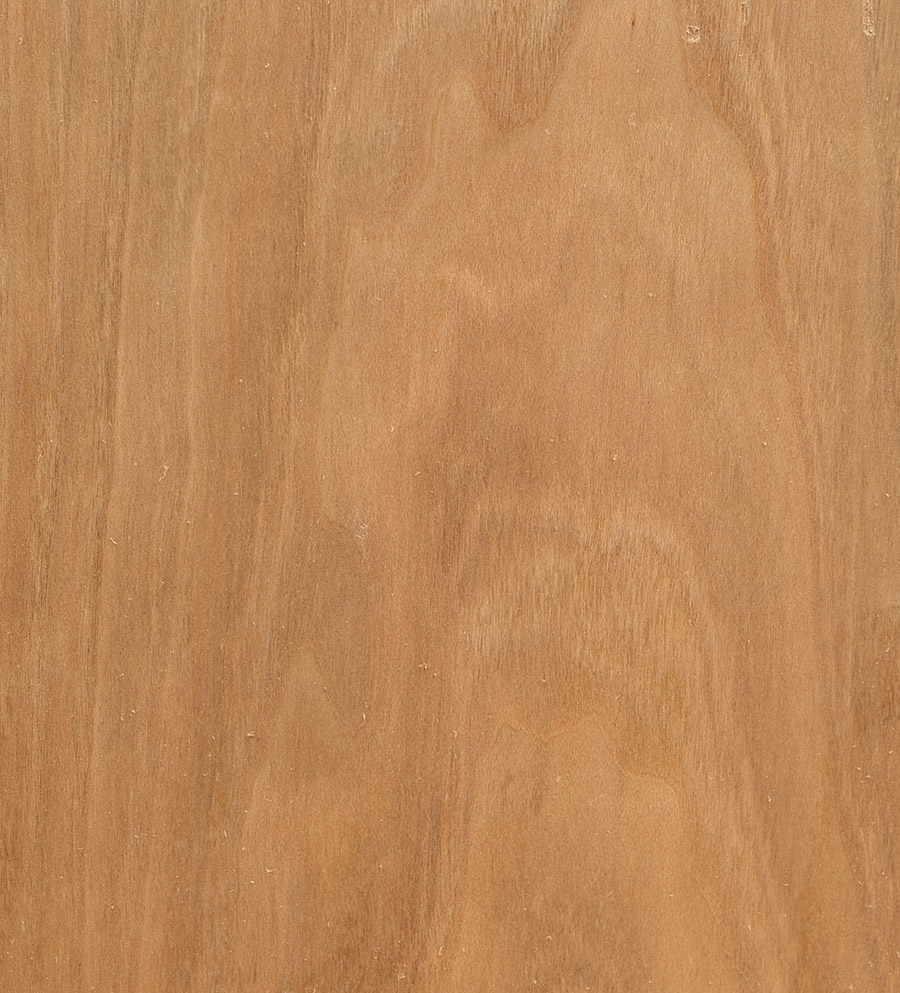
1. Scientific name: Prunus serotina
2. Wood origin: Domestic
3. Type: Deciduous
4. Color: Medium reddish brown when first cut but naturally darkens with age.
5. Hardness: Medium hard (Janka scale: 950 lbf)
6. Modulus of elasticity: 1,490,000 lbf/in2
7. Movement (DCC): Radial: 0.00126, Tangential: 0.00248
8. General use: High-class furniture, frames, flooring, turning, ornamental boxes.
9. Watch out for: The only issue with cherry is that there may be blotchy areas when staining, so sanding sealers or gel stains are recommended. Cherry will darken over time in sunlight or shaded areas. Sapwood will be lighter in color than heartwood and may not darken as much. So, when making furniture, be selective of the boards. Sometimes it’s better to spend more to get premium boards than to get lesser quality and not use half of them.
10. Cost: Because of its desirability, prices can be higher than other woods.
11. Comments: This is one of the best “workability” woods. It machines well, handwork is excellent, it’s stable—what’s not to like? Because it is closed-pore wood, it is recommended for cutting and end-grain cutting boards.
Ebony (Gaboon Ebony, African Ebony, Nigerian Ebony, Cameroon Ebony)
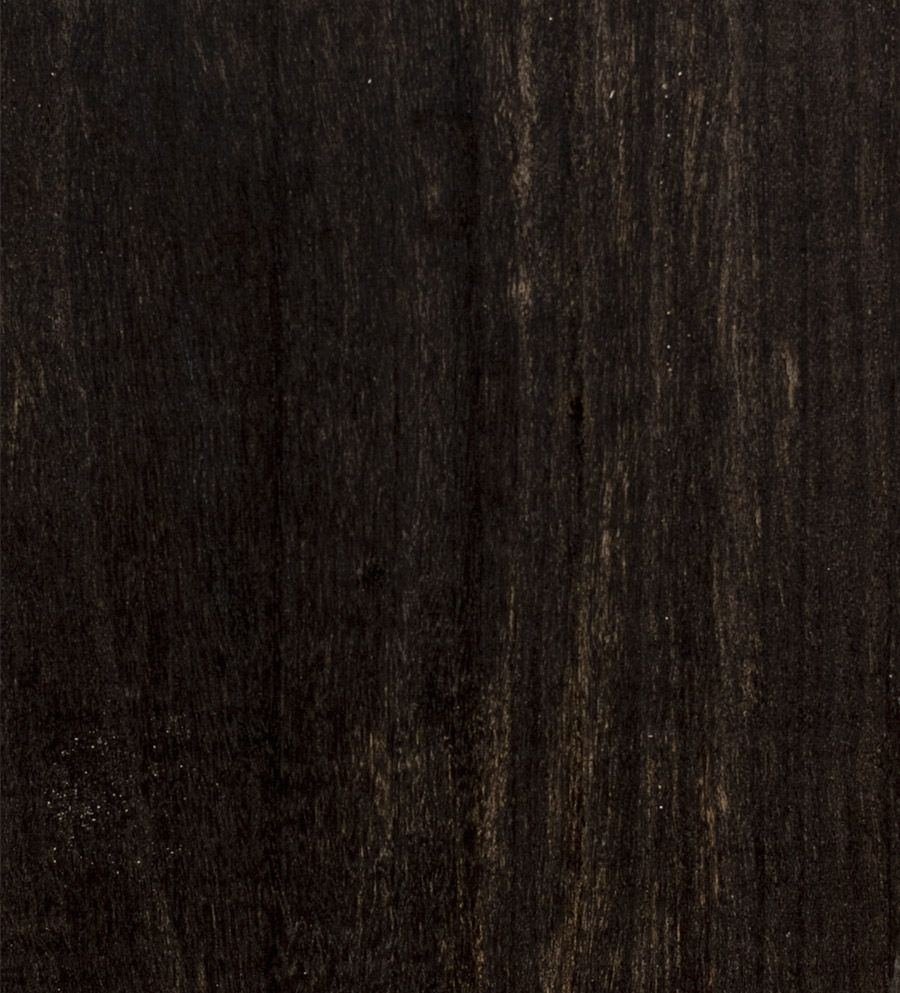
1. Scientific name: Diospyros crassiflora
2. Wood origin: Exotic
3. Type: Deciduous
4. Color: Ebony is known for its black-colored wood; heartwood can be light brown, grey, or greenish-black.
5. Hardness: Very hard (Janka scale: 3,080 lbf)
6. Modulus of elasticity: 2,449,000 lbf/in2
7. Movement (DCC): Radial: 0.00196, Tangential: 0.00232
8. General use: Small and ornamental items, such as piano keys, pool cues, carvings, decoration on Arts and Crafts furniture (specifically Greene & Greene styles).
9. Watch out for: It can be difficult to work due to how hard and brittle it is. If you take a piece of ebony and scratch it across a light-colored wood, it will leave a trace. Requires very sharp tools and constant resharpening. It can be expensive.
10.Cost: Very expensive due to the small size of the trees and the wood’s strong desirability.
11. Comments: Because it’s brittle, it polishes very well. It is related to the persimmon tree. It is so dense that it sinks in water.
Fir (Douglas)
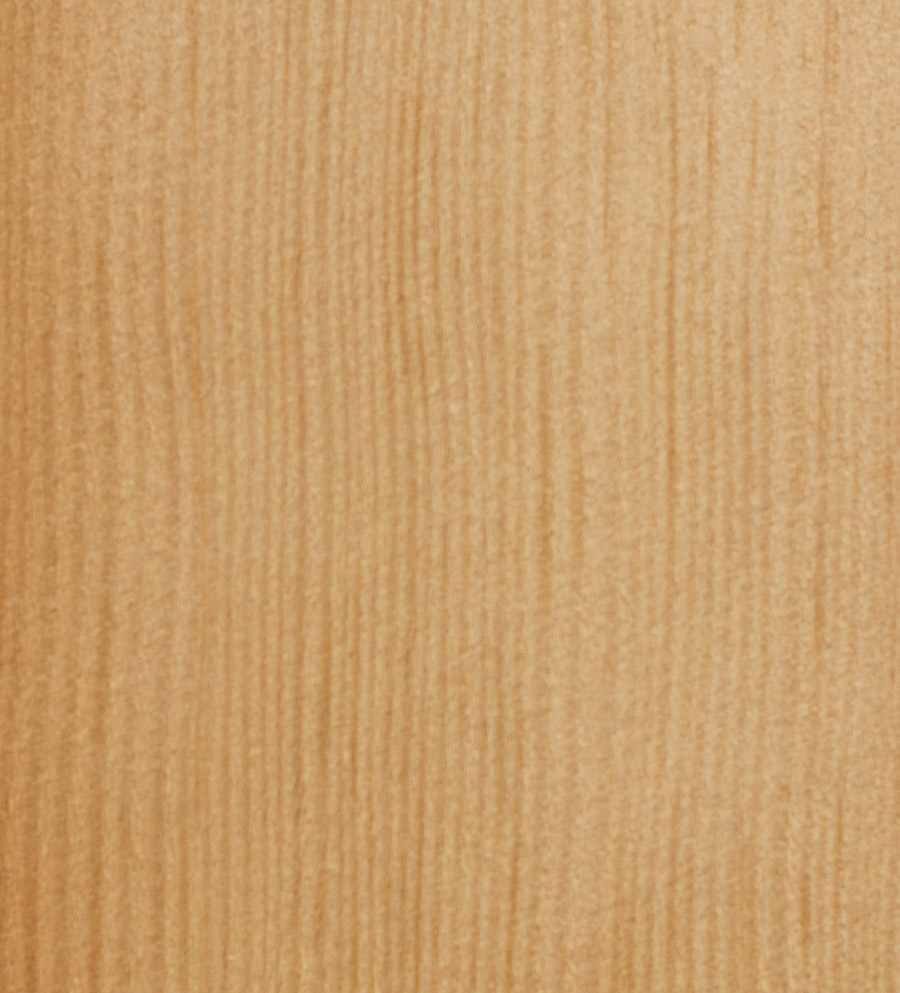 (Image is quarter sawn)
(Image is quarter sawn)
1. Scientific name: Pseudotsuga menziesii
2. Wood origin: Domestic
3. Type: Evergreen
4. Color: Light brown with bits of red and yellow, with long lines of summerwood between lighter springwood. The darkness can vary from light brown to a darker reddish-brown.
5. Hardness: Soft (Janka scale: 620 lbf)
6. Modulus of elasticity: 1,765,000 lbf/in2
7. Movement (DCC): Radial: 0.00165, Tangential: 0.00263
8. General use: Mostly construction, plywood, and veneers
9. Watch out for: Douglas fir has an abundance of pitch that must be cleaned often from cutting tools. Even without the pitch issue, it can dull tools faster than expected. The tough fibers of Douglas fir require very sharp tools as the grain can tear easily. Tearing is not cutting. The wood is soft enough to not require pre-drilling holes for nails, but screw holes are recommended.
10. Cost: Generally not expensive, but old-growth wood can get pricey.
11. Comments: Not a true fir (Albies genus) and is in a different genus (Pseudotsuga). Moderately resistant to decay. The trees are among the tallest known. It is lightweight yet very strong and has one of the highest strength-to-weight ratios of all trees. Despite its strength, it is somewhat soft, so it is not recommended for conditions where it can be scratched or dented.
Hickory
 There are two very similar types of hickories: “true hickories” and “pecan hickories.” Some stores may sell pecan as hickory. Their woodworking characteristics are very similar. The only primary difference is that true hickories tend to be slightly denser than pecan hickories and therefore tend to be harder and stronger. They also have greater wood movement.
There are two very similar types of hickories: “true hickories” and “pecan hickories.” Some stores may sell pecan as hickory. Their woodworking characteristics are very similar. The only primary difference is that true hickories tend to be slightly denser than pecan hickories and therefore tend to be harder and stronger. They also have greater wood movement.
1. Scientific name: True hickory: Carya glabra, Carya laciniosa, Carya ovata, Carya tomentosa; Pecan hickory: Carya aquatica, Carya cordiformis
2. Wood origin: Domestic
3. Type: Deciduous
4. Color: Medium brown to yellowish-brown.
5. Hardness: (Janka rating of varying between 1,810–2,140 lbf)
6. Modulus of elasticity: 2,260,000 lbf/in2
7. Movement (DCC): Radial: 0.00259, Tangential: 0.00411
8. General use: High shock resistance, therefore good for tool handles and flooring. In sports, it is used in hockey sticks, tennis rackets, and golf clubs. They are used for furniture and often drawer sides to contrast the front piece.
9. Watch out for: Due to tearout, hickory can be difficult to work with. Sharp tools help, but hickory can dull tools faster than other woods.
10. Cost: Pecan is often sold as hickory at low to mid prices as it is plentiful.
11. Comments: Known for its combination of strength, density, stiffness, and toughness. It is a straight-grained wood with a medium texture. Hickory should not be used in an outside environment. Carbide tips are recommended for power tools.
Hickory is an excellent smoking wood when BBQing or smoking meats—although similar to hickory, adding pecan adds another flavor dimension, and the two are excellent when used together.Hickory (Pecan)
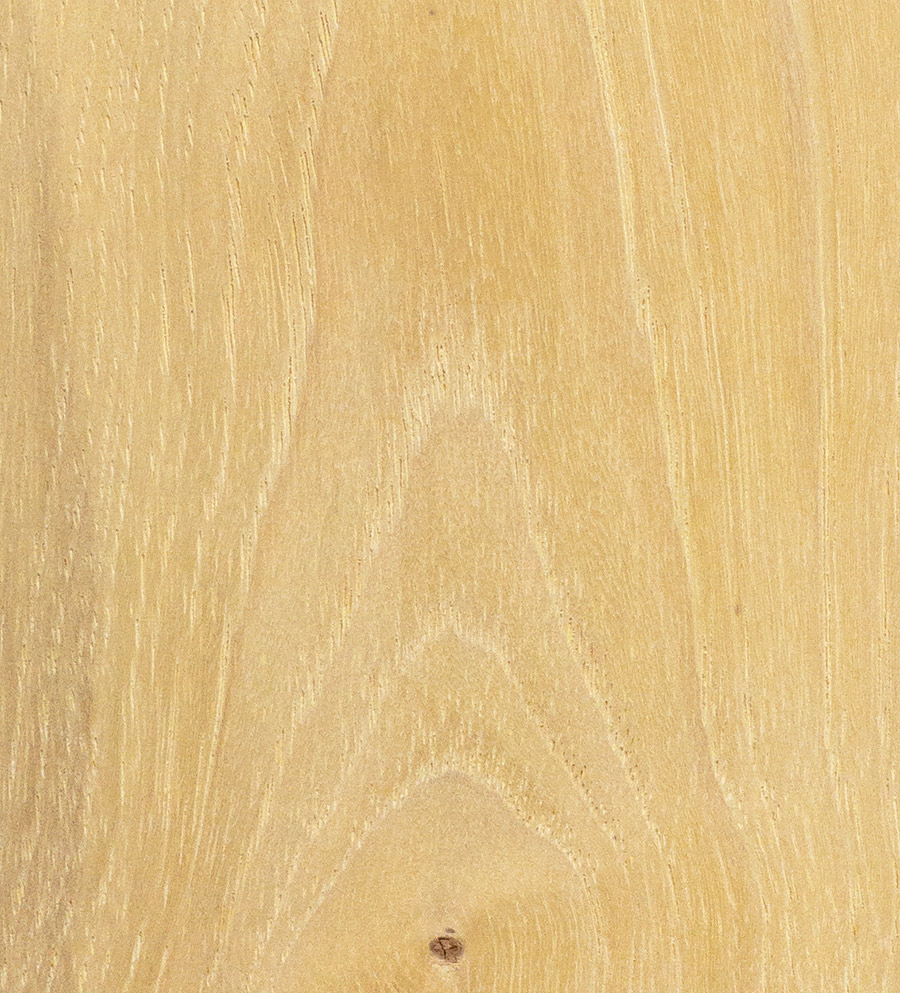 Pecan and hickory are very similar and often are substituted one for the other. Generally, hickories are a bit denser and harder than pecans. They share the same genus (Carya), and it can be difficult to separate the two.
Pecan and hickory are very similar and often are substituted one for the other. Generally, hickories are a bit denser and harder than pecans. They share the same genus (Carya), and it can be difficult to separate the two.
1. Scientific name: Carya illinoinesis, Carya myristicformis
2. Wood origin: Domestic
3. Type: Deciduous
4. Color: Light to medium brown with a slightly reddish hue. Sapwood is yellowish-brown.
5. Hardness: Hard (Janka rating of 1,500 lbf–1,820 lbf)
6. Movement (DCC): Radial: 0.00169, Tangential: 0.00315
7. Modulus of elasticity: 1,730,000 lbf/in2
8. General use: Because of its strength, pecan is used for tool handles and flooring. Pecan is a bit softer than hickory but is still a very hard wood.
9. Watch out for: Pecan is generally difficult to work, and when using power tools, you need to have backing boards to limit tearout. Handwork will require constant sharpening of tools. It glues and stains well. It will readily distort with humidity changes.
10. Cost: Prices are low to mid, but if you want pecan, be sure you’re not getting hickory.
11. Comments: Because of the similarities between hickory and pecan, be careful when selecting the boards for a project where the wood will show, as you may end up with woods that are not related. However, even within pecan woods, there can be significant color variations, so you should choose all of the wood for a given project at the same time to help maintain colors across sections of the project. Pecan is an excellent smoking wood when BBQing or smoking meats—although similar to hickory, combining the two woods adds an extra flavor dimension and makes an excellent combination.
Ipe (Brazilian Walnut, Lapacho)

1. Scientific name: Handroanthus spp. (It was formerly in the Tabebuia genus, but genetic analysis initiated the change.)
2. Wood origin: Exotic
3. Type: Deciduous
4. Color: Heartwood is olive-brown to amber to near black. There may be lighter and darker striping. Sapwood is yellowish to whitish.
5. Hardness: Very hard (Janka scale of 3,510 lbf)
6. Modulus of elasticity: 3,200,000 lbf/in2
7. Movement (DCC): Radial: 0.00236, Tangential: 0.00286
8. General use: Outside use for decking, furniture, etc.
9. Watch out for: Carbide-tipped tools are a must because of this wood’s hardness. Even then, the tools will dull. The wood is oily (which is why it’s resistant to termites and other boring bugs). But that also means you need to tend pitch buildup on tools, and gluing may be difficult. Painting ipe should not be considered. Pre-drilling is mandatory for screws.
10. Cost: Prices are moderate to high for an imported wood. However, because of its longevity outside, it can be less expensive than other woods when looking at the project’s long-term viability.
11. Comments: One of the hardest and most durable woods in the world. As such, it can be difficult to work and will dull tools quickly. It is resistant to rot, so excellent for outdoor use. It is sometimes known as Brazilian Walnut.
Mahogany*
*Note: There are MANY kinds of wood sold as mahogany, and there are many “official” names for the same species of mahogany wood. Below you will see a breakdown, including the scientific names for some of them.Mahogany 1 (Honduran Mahogany, Genuine Mahogany, Big-Leaf Mahogany, Brazilian Mahogany, American Mahogany)
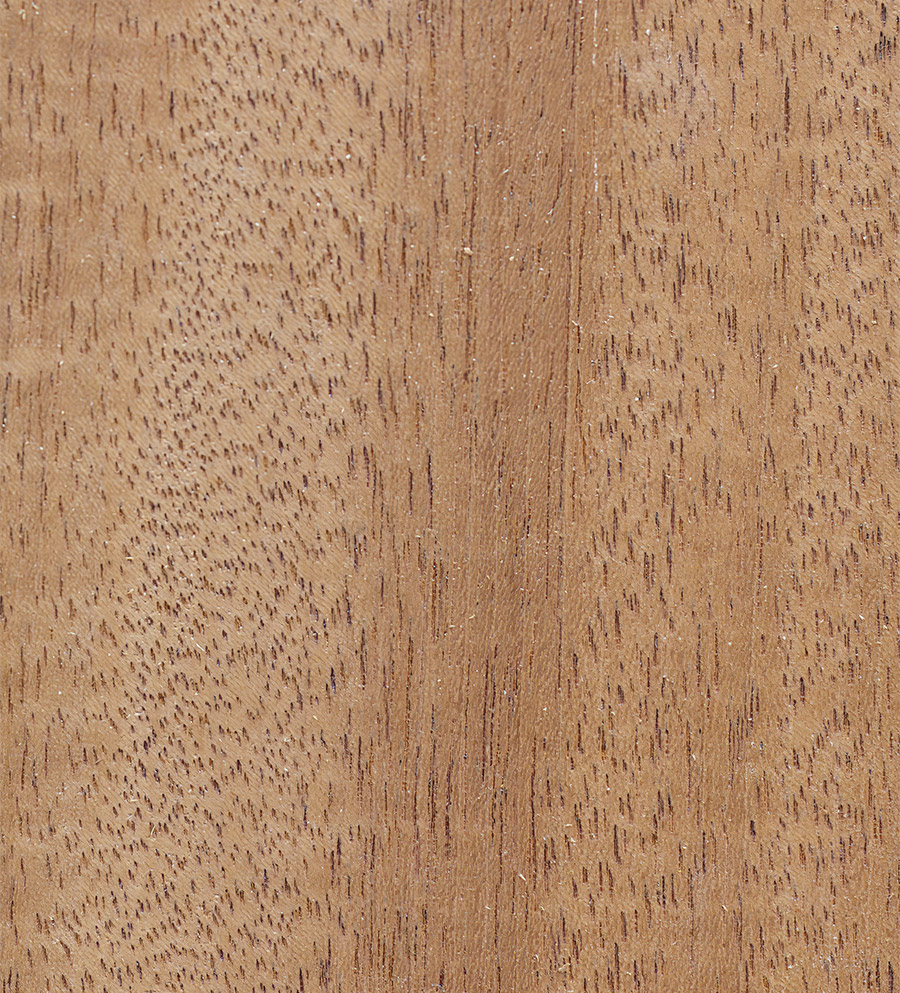
1. Scientific name: Swietenia macrophylla
2. Wood origin: Domestic
3. Type: Deciduous
4. Color: Heartwood can go from pale pinkish-brown to darker reddish-brown. It will darken with age. Grain can be straight, interlocked, irregular, or wavy.
5. Hardness: Moderately soft (Janka scale: 900 lbf). Easy to work with both hand and power tools.
6. Modulus of elasticity: 1,458,000 lbf/in2
7. Movement (DCC): Radial: 0.00172, Tangential: 0.00238
8. General use: Furniture, cabinetry, turning, veneer, musical instruments, boatbuilding, and carving.
9.Watch out for: Plantation-grown is less durable and paler in color.
10. Cost: Prices are in the mid-range for an imported wood.
11. Comments: A great wood to work with for both hand and machine milling. Beautiful grain. It is one of the great woodworking woods. Be aware that it occasionally has silica in the wood, causing extra wear to tools.
Mahogany 2 (African Mahogany)

1. Scientific name: Khaya spp. (Khaya anthotheca, K. grandifoliola, K. ivorensis, K. senegalensis)
2. Wood origin: Exotic
3. Type: Deciduous
4. Color: Heartwood color can vary, from pale pink to deep reddish-brown. It may have streaks of medium to dark reddish-brown. Colors darken with age.
5. Hardness: Relatively soft (Janka scale of 1,070 lbf)
6. Modulus of elasticity: 1,537,000 lbf/in2
7. Movement (DCC): Radial: 0.00089, Tangential: 0.00161
8. General use: Veneer, plywood, turning, furniture, boatbuilding, interior trim.
9. Watch out for: It can lack true mahogany’s deep red-brown color and durability. It is, however, a valid substitute for true mahogany. It occasionally has silica in the wood, causing extra wear to tools. Sanding is likely to cause a lifting of fibers, giving the surface a “wooly” texture. This can be taken care of by using scrapers and planes in wood preparation or sanding after the first coat with wet sanding (with wet/dry sandpaper).
10. Cost: Prices are low to moderate for an imported wood.
11. Comments: Does not blotch with finishing. Durable, resistant to decay, and stands up against water damage. It is harder than true mahogany. It can be used inside or outside. Despite its name, this wood is grown in Africa and South America.
Mahogany 3 (Philippine Mahogany)
See Meranti.Maple (Hard)
(Rock Maple, Sugar Maple)
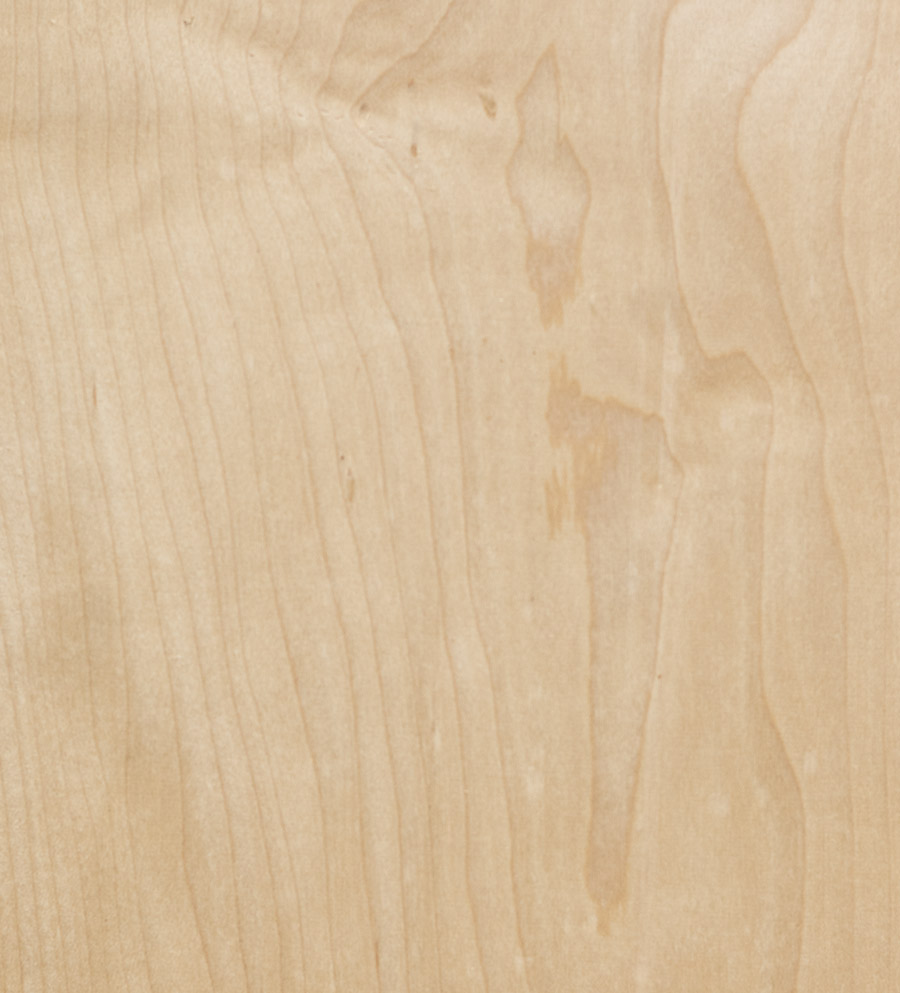
1. Scientific name: Acer saccharum
2. Wood origin: Domestic
3. Type: Deciduous
4. Color: Sapwood is a light cream color with a red or golden hue. Heartwood is darker. Birdseye and curly or quilted grain are more commonly found in hard maple.
5. Hardness: Moderately hard (Janka scale: 1,450 lbf)
6. Modulus of elasticity: 1,830,000 lpf/in2
7. Movement (DCC): Radial: 0.00165, Tangential: 0.00353
8. General use: Flooring (think bowling alleys), veneer, high-end furniture, cutting boards, butcher blocks, workbenches, baseball bats, turning.
9. Watch out for: It may get surface burning when using high-speed cutters. It may need a pre-conditioner or gel stain when staining, or wood may blotch. Because of its hardness, it will be more difficult to work with than softer woods.
10. Cost: More expensive than soft maple, but the pricing should be moderate. While normally straight-grained, variations in the grain can be wavy, and this can appear as birdseye, curly, rippled, or fiddleback appearances; these boards will be higher priced due to their uniqueness.
11. Comments: The light-colored maple will darken over time. If you buy maple over a period of time, the color change may not be uniform. Thus, for a big project, purchase all your maple at the same time. Draining the liquid sap from the sapwood gives us maple syrup. Hard maple is stiffer, denser, and harder than “soft” maples. Because it is closed-pore wood, it is recommended for cutting boards in general and end-grain cutting boards in specific.
Maple (Soft)
(Silver Maple, Red Maple)
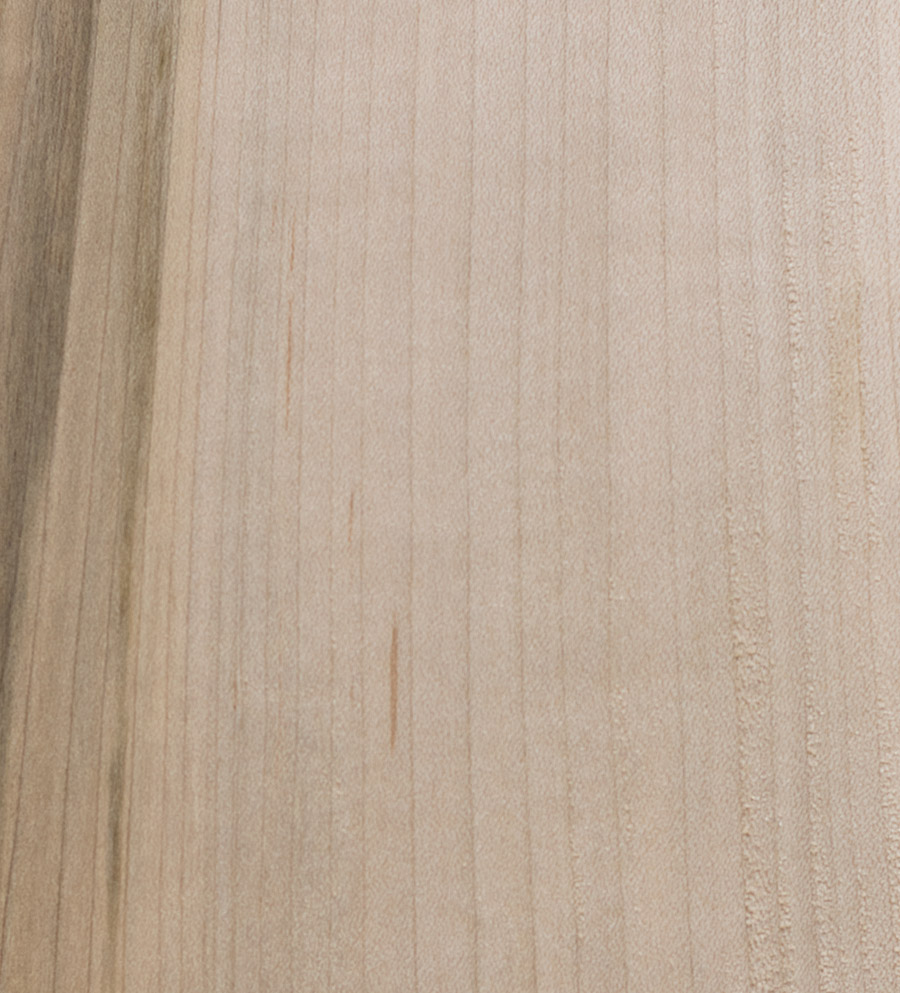 Note: Because of their similar properties, I will provide the technical information for both silver and red maples; both are considered soft maples
Note: Because of their similar properties, I will provide the technical information for both silver and red maples; both are considered soft maples
1. Scientific name: [Silver maple: Acer rubrum]; [Red maple: Acer saccharinum]
2. Wood origin: Domestic
3. Type: Deciduous
4. Color: Sapwood is almost white to light golden or reddish-brown. Heartwood is darker reddish-brown.
5. Hardness:
Silver: Janka scale of 700 lbf
Red: Janka scale of 950 lbf
6. Modulus of elasticity:
Silver: 1,140,000 lbf/in2
Red: 1,640,000 lbf/in2
7. Movement (DCC):
Silver: Radial: 0.00102, Tangential: 0.00252
Red: Radial: 0.00137, Tangential: 0.00289
8. General use: Veneers, boxes, pallets, musical instruments, turning, and other small items.
9. Watch out for: May burn with high-speed cutting edges (table saws and routers). It may need a pre-conditioner or gel stain when staining, or wood may blotch. Because of its hardness, it will be more difficult to work with than softer woods.
10. Cost: Less expensive than hard maple, but the pricing should be moderate; any figured wood will be more expensive.
11. Comments: Of the soft maples, red maple is the hardest. However, it’s not as hard as hard maple.
How to identify the difference between hard and soft maple:
1. The heavier one is probably hard maple if you can weigh equal-sized pieces.
2. Test with iron sulfate (aka ferrous sulfate): hard maple will appear green or pale blue, while soft maple will appear dark blue or black.
3. The end grain of hard maple is tighter (denser) than soft maple and is likely to have streaks of gray, brown, and/or red.
Meranti, Light Red (Lauan)
(Sometimes called Philippine Mahogany)

1. Scientific name: Shorea spp.
2. Wood origin: Exotic
3. Type: Deciduous
4. Color: Pale straw to dark reddish-brown, may have white streaks. Grain can be straight or interlocked.
5. Hardness: Moderately soft (Janka scale: 550 lbf)
6. Modulus of elasticity: 1,652,000 lbf/in2
7. Movement (DCC): Radial: 0.00126, Tangential: 0.00241
8. General use: Plywood, indoor furniture, general construction.
9. Watch out for: The interlocked grain can cause issues when planing. Meranti is brittle, so it can split and is easy to splinter. Crosscutting and routing are best done with backing to limit tearout. It is essential to pre-drill for screws. Nails hold well and do not need pre-drilling (except near an edge). While real mahogany can carve well, meranti does not. Planing is best done with a helical head cutter; straight edges may cause tearout. Meranti can contain silica that may quicken wear on tools; power tools should use carbide blades.
10. Cost: Moderately priced despite it being an imported wood.
11. Comments: Meranti is not related to mahogany in any way. It is not suitable for outside items. It is also one of the woods that requires repeated varnishing as maintenance. Meranti is dimensionally stable so that it can be transported after construction with reasonable comfort. There are over 70 species of meranti, so specific identification is difficult. Dark red (aka Lauan or Philippine mahogany) and light red meranti are two primary species. Dark red is harder than light red.
Oak (Red)

1. Scientific name: Quercus rubra
2. Wood origin: Domestic
3. Type: Deciduous
4. Color: Light to medium brown with a reddish cast. Both red and white oak have dynamic rays and flecks on quarter sawn wood. However, red oak’s rays and flecks are smaller.
5. Hardness: Janka scale of 1,220 lbf
6. Movement (DCC): Radial: 0.00151, Tangential: 0.00350
7. Modulus of elasticity: 1,761,000 lbf/in2
8. General use: Cabinetry, furniture, flooring, veneer, interior trim
9. Watch out for: Red oak is not very durable against rot, so it is not recommended for outdoor projects. Because of high wood movement, there can be issues with flat sawn boards. It can burn if the pitch collects on high-speed blades and router bits.
10. Cost: Not excessive; the price will be higher if you get quarter sawn boards.
11. Comments: Oak is strong and hard and is used when strength is needed. However, due to its porous nature, it does not have a smooth flat surface, and if such is desired, pore-filling compounds must be used prior to finishing. Pre-drilling is necessary for screws and might be necessary when nailing because it’s so hard.
Oak (White)
 (Image is quarter sawn)
Note: Because white oak has such striking quarter sawn wood, we are placing both quarter and flat sawn samples to show the range of appearance.
(Image is quarter sawn)
Note: Because white oak has such striking quarter sawn wood, we are placing both quarter and flat sawn samples to show the range of appearance.
Oak (White)
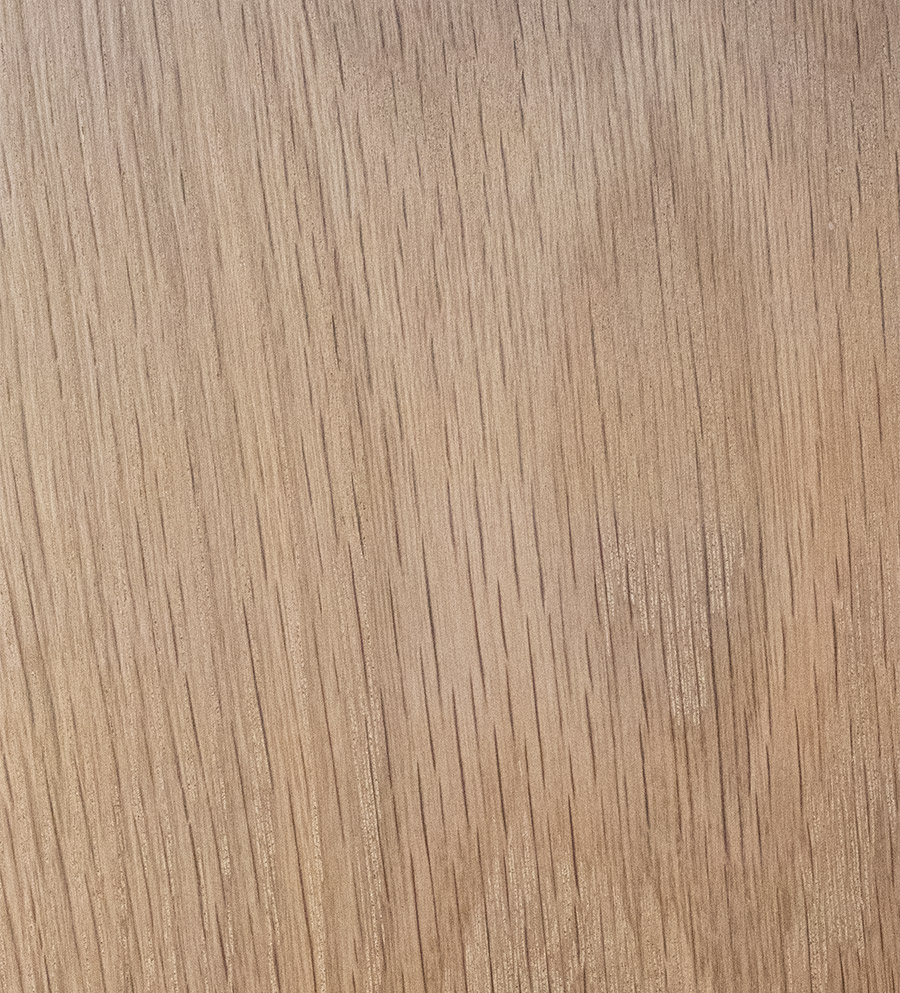 (Image is flat sawn)
(Image is flat sawn)
1. Scientific name: Quercus alba
2. Wood origin: Domestic
3. Type: Deciduous
4. Color: Light to medium brown with an olive light brown cast. Sometimes there can be a yellowish cast to the wood. Quarter sawn oak is known for its dynamic ray and fleck patterns. White oak’s rays and flecks are larger than red oak’s.
5. Hardness: Janka scale: 1,350 lbf
6. Movement (DCC): Radial: 0.00180, Tangential: 0.00365
7. Modulus of elasticity: 1,762,000 lbf/in2
8. General use: Cabinetry, furniture, interior trim, flooring, boatbuilding, barrels, and veneer.
9. Watch out for: White oak is durable against rot and can be used for outdoor projects. Because of high movement, there can be issues with flat sawn boards. It can burn if the pitch collects on high-speed blades and router bits. It’s often not easy to distinguish between heartwood and sapwood in white oak. There are tannins in the heartwood but none in the sapwood. If you’re fuming with ammonia, a piece of heartwood will darken beautifully, but fuming has no darkening effect on the sapwood.
10. Cost: Slightly more expensive than red oak. Quarter sawn is more expensive than flat sawn, and thicker boards are more expensive.
11. Comments: Because the pores in white oak are filled with tyloses, white oak is used to contain wine and whiskey in barrels. While other woods could be used to contain wine, it’s the tannins in oak that help impart the desired flavors and characteristics in the wine.
How to identify the differences between red and white oak:
 There are over 60 species of oak, but woodworkers typically talk about just two of them: red and white. Because of that simplification, when specific colors are discussed, there can be confusion because one person may be looking at a different species of red or white than the other. However, despite the range of species, talking about the two, red and white, is sufficient because each of these two groups can contain a myriad of species.
Color alone is not always a good indicator of the kind of oak you have. It’s possible to have a light reddish white oak or a darker, browner, red oak. The best way to determine the difference is to cut a cross-section of the wood and sand to a fine grid (320 is sufficient). With an air compressor, blow out any dust.
The difference is evident with the above macro-image: the red oak is porous while the white oak’s pores are plugged up with tyloses. If you smoke, you can blow the smoke through the end of red oak, but this is not possible with white oak. This is also why red oak is not a good wood for outdoor use, while white oak is good.
Both red and white oaks have a lot of tannins in the wood. As such, they fume well. To learn more about fuming, see “How to Safely Fume Your Furniture“.
Oaks can darken over time, even with a finish, due to oxygen and UV light exposure.
There are over 60 species of oak, but woodworkers typically talk about just two of them: red and white. Because of that simplification, when specific colors are discussed, there can be confusion because one person may be looking at a different species of red or white than the other. However, despite the range of species, talking about the two, red and white, is sufficient because each of these two groups can contain a myriad of species.
Color alone is not always a good indicator of the kind of oak you have. It’s possible to have a light reddish white oak or a darker, browner, red oak. The best way to determine the difference is to cut a cross-section of the wood and sand to a fine grid (320 is sufficient). With an air compressor, blow out any dust.
The difference is evident with the above macro-image: the red oak is porous while the white oak’s pores are plugged up with tyloses. If you smoke, you can blow the smoke through the end of red oak, but this is not possible with white oak. This is also why red oak is not a good wood for outdoor use, while white oak is good.
Both red and white oaks have a lot of tannins in the wood. As such, they fume well. To learn more about fuming, see “How to Safely Fume Your Furniture“.
Oaks can darken over time, even with a finish, due to oxygen and UV light exposure.
Padauk (African)
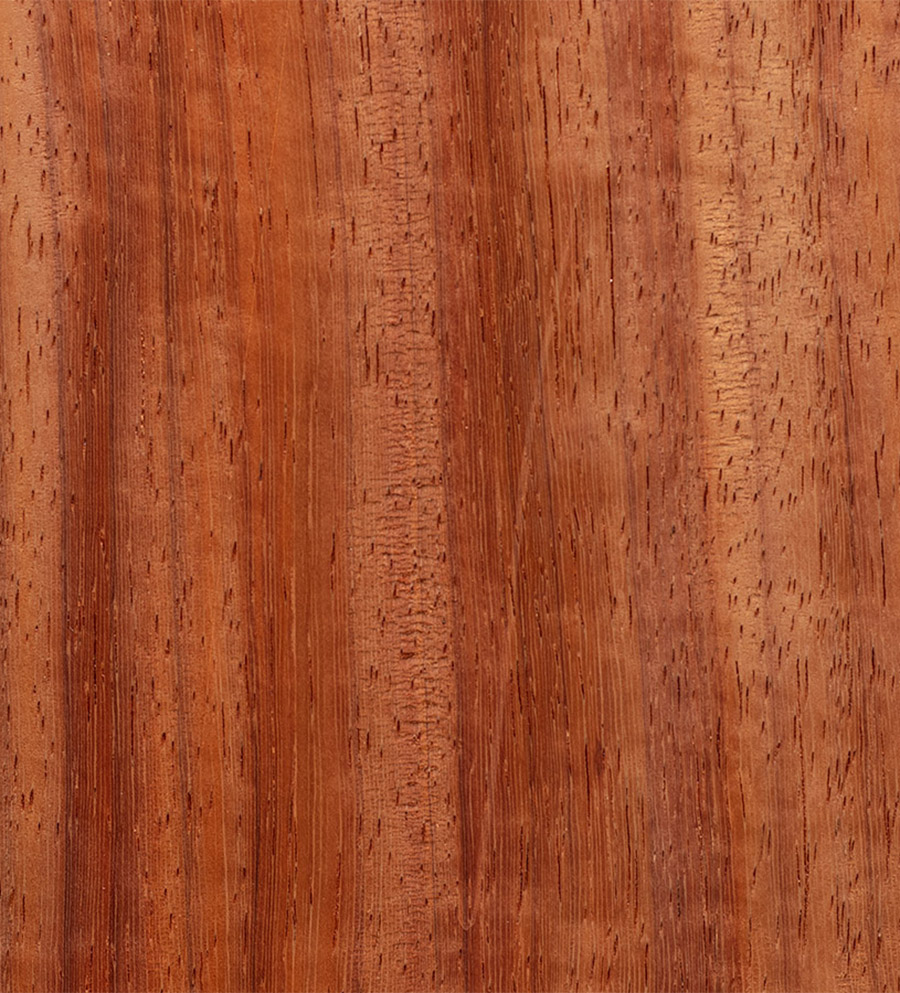
1. Scientific name: Pterocarpus soyauxii
2. Wood origin: Exotic
3. Type: Deciduous
4. Color: Heartwood reddish-orange when cut and darkens to a purple-brown over time. Sapwood is whitish-brown to brown-yellow. It has a coarse texture with straight grain.
5. Hardness: Moderately hard (Janka scale: 1,970 lbf)
6. Movement (DCC): Radial: ??, Tangential: 0.00180
7. Modulus of elasticity: 1,700,000 lbf/in2
8. General use: Fine joinery, turning, musical instruments, carving, flooring, tool handles, and veneer. It’s easy to glue and holds screws well.
9. Watch out for: Dust collection when sanding is critical. At a minimum, the dust will settle all over the shop as a fine red powder. If you have light-colored wood adjacent to the padauk, it will start to stain red from the sanding. If you’re working in an area with interlocked grain, there may be tearout when planing.
10. Cost: It has a moderate price for an import, but freight costs can increase the price.
11. Comments: Sometimes confused with rosewood, but it is not as pretty. It does very well outdoors and is resistant to termites. There are seven known padauk species, but only the African is commonly available. Reasonably stable and does not warp considerably after milling.
Poplar (Yellow Poplar)
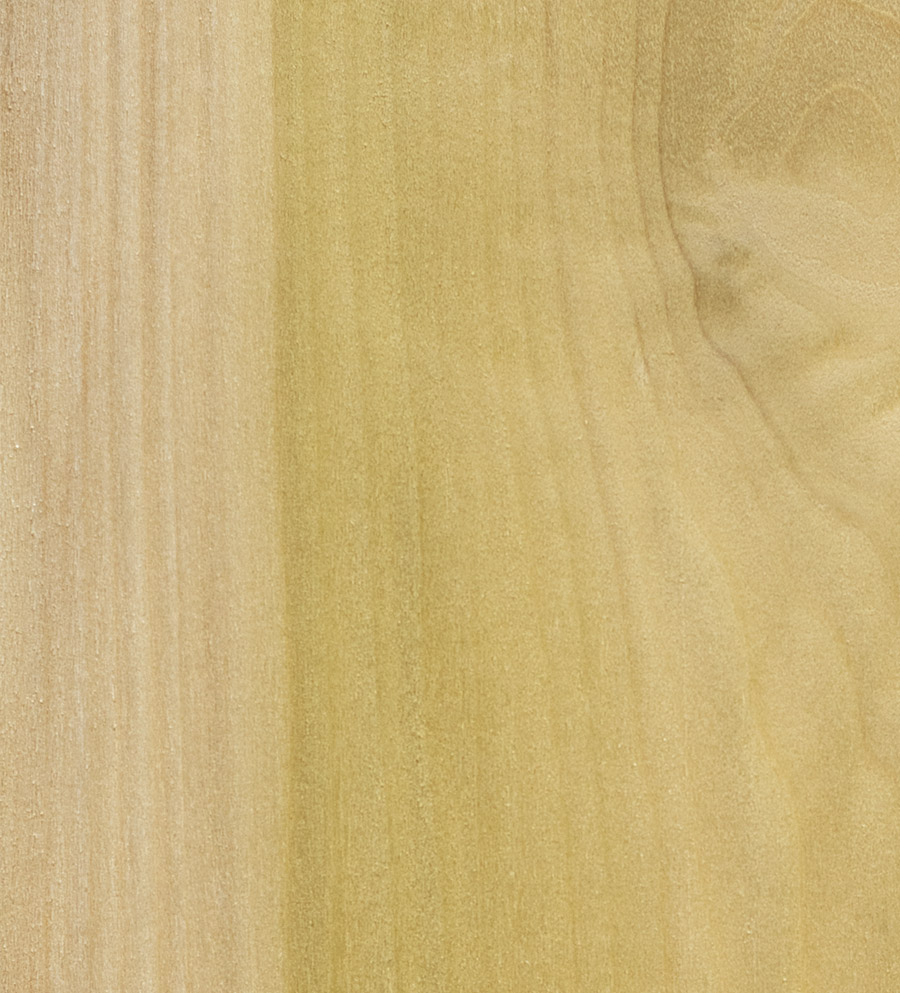
1. Scientific name: Liriodendron tulipifera
2. Wood origin: Domestic
3. Type: Deciduous
4. Color: Light cream to yellow-brown and regions of dark brown and/or green. Minerals in the ground can also add red, green, or yellow.
5. Hardness: Relatively soft (Janka scale: 540 lbf)
6. Movement (DCC): Radial: 0.00158, Tangential: 0.00289
7. Modulus of elasticity: 1,580,000 lbf/in2
8. General use: One of the best utility woods out there. It machines very easily with both hand and power tools. It can be used in everything from jigs in the shop to furniture and cabinetry that will be painted. It’s hard to stain, but it can be done by those who know what they’re doing.
9. Watch out for: Can leave a fuzzy surface with “almost” sharp tools and lower-grade sandpaper. Because of the green regions (see photo above), the wood selection is critical before starting a non-painted project.
10. Cost: Very economical and readily available.
11. Comments: Poplar is not really a poplar (in the Populus genus family, such as white poplar). It got its name because its flowers are similar to tulips, and yellow poplar is sometimes known as tulip poplar. Staining can have splotchy regions, and the pigment in a stain can leave specs in the wood. Therefore, preparation for staining is critical. Poplar paints very well.
Purpleheart (Amaranth)
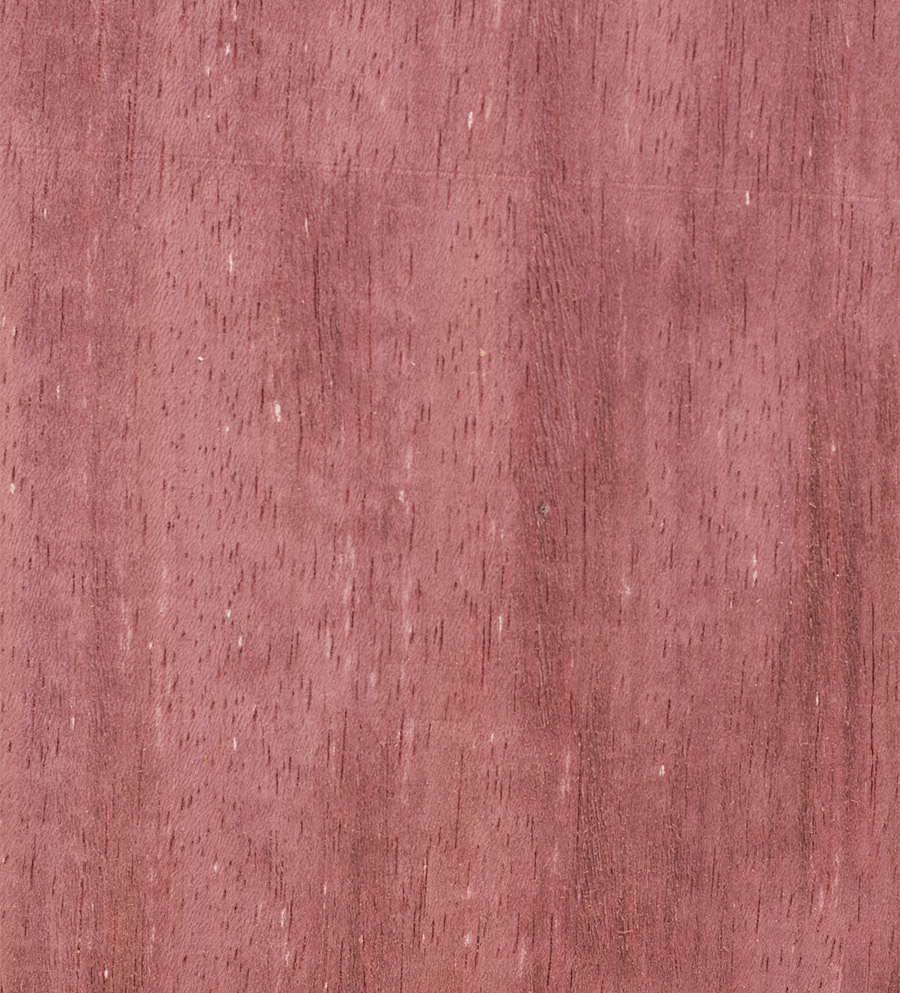
1. Scientific name: Peltogyne spp.
2. Wood origin: Exotic
3. Type: Deciduous
4. Color: When freshly cut, the wood is a dull grayish-purple. Then it becomes a deep purple but fades to dark brown over time. This can be minimized by covering a UV-inhibiting finish on the wood.
5. Hardness: It is very hard (Janka scale of 2,520 lbf)
6. Movement (DCC): Radial: 0.00114, Tangential: 0.00218
7. Modulus of elasticity: 2,937,000 lbf/in2
8. General use: turning, fine furniture, flooring, heavy construction
9. Watch out for: It can be difficult to work with, as it dulls cutting tools. This causes heat generation, which releases lots of resin that needs to be cleaned off power cutting tools, which compounds the problem. So, part of the production time should include pre-planned cleaning of tool edges. Nail and screw holes should be pre-drilled.
10. Cost: Available in a good range of widths and thicknesses. The prices are reasonable considering it’s an imported wood.
11. Comments: This is heavy wood and is very strong. The majority of purpleheart species are grown in the Amazon basin. The wood’s color changes as it’s exposed to UV light and can become more purple after initial cutting. It will then settle down to a maroon, chocolate purple, or almost black. It’s best to cover with a UV-inhibiting finish to limit the amount of color shift.
Teak (Burmese Teak)

1. Scientific name: Tectona grandis
2. Wood origin: Exotic
3. Type: Deciduous
4. Color: Heartwood is dark golden-yellow turning dark brown with exposure to the environment. Sapwood is light yellow. Grain is straight, wavy, or coarse texture.
5. Hardness: Moderate (Janka scale: 1,070 lbf)
6. Movement (DCC): Radial: 0.00101, Tangential: 0.00186
7. Modulus of elasticity: 1,782,000 lbf/in2
8. General use: Furniture, flooring, carving, cabinetwork, turning, shipbuilding.
9. Watch out for: Dust may cause skin irritations. Teak is an oily wood, so preparation before gluing is essential. One solution is to wipe the surface with a solvent. Alternatively, sand the surface before gluing. One other alternative is to use a non-water-based glue such as epoxy.
10.Cost: Even though it is readily available, it is not cheap.
11. Comments: Teak has natural oils giving the wood a waxy feel. This “wax” makes it resistant to termites. It is very stable and has very little dimensional change. It is extremely durable in outdoor conditions and can easily be restored to its original beauty and colors. Several kinds of wood have been erroneously called teak; for example, Rhodesian teak is not a teak wood.
Walnut (Black Walnut)
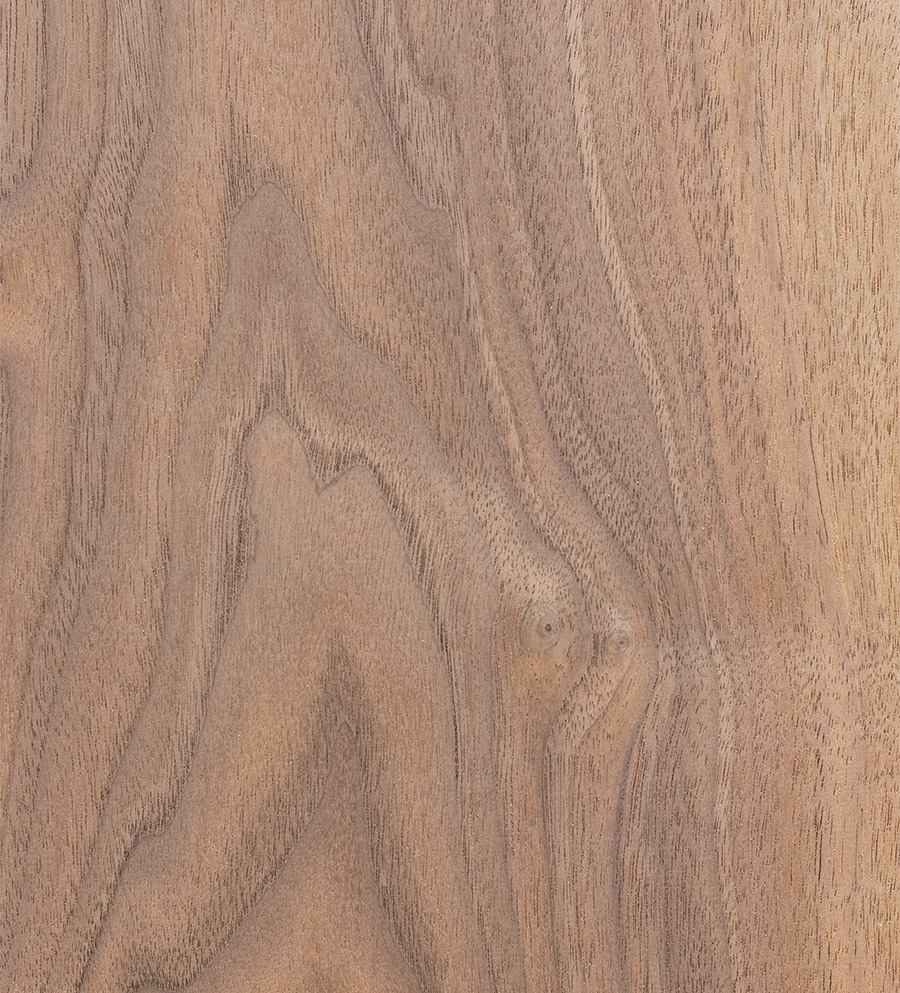
1. Scientific name: Juglans nigra
2. Wood origin: Domestic
3. Type: Deciduous
4. Color: Ranges from light pale brown to dark chocolate brown with dark streaks. Sapwood is yellow-gray to white. Grain can be patterned.
5. Hardness: Moderately hard (Janka scale: 1,010 lbf)
6. Movement (DCC): Radial: 0.00190, Tangential: 0.00274)
7. Modulus of elasticity: 1,680,000 lbf/in2
8. General use: Furniture, cabinetry, paneling, veneer, turning, gunstocks.
9. Watch out for: Easy to work with, but the grain can lift, causing tearout. The finish can react with UV to change from dark brown to an orange-honey color. So, best to keep out of direct or reflected sunlight.
10. Cost: It is easily found, but prices can be high due to its desirability.
11. Comments: It’s a wood that everyone loves to work with because the results are often good to excellent. The colors are bewitching. The wood itself has excellent strength. While the wood we know is dark brown, the sapwood is pale yellow. This can be good or bad depending on what you’re making and/or if you are placing the light wood in strategic and artistic locations.
Zebrawood (Zebrano)
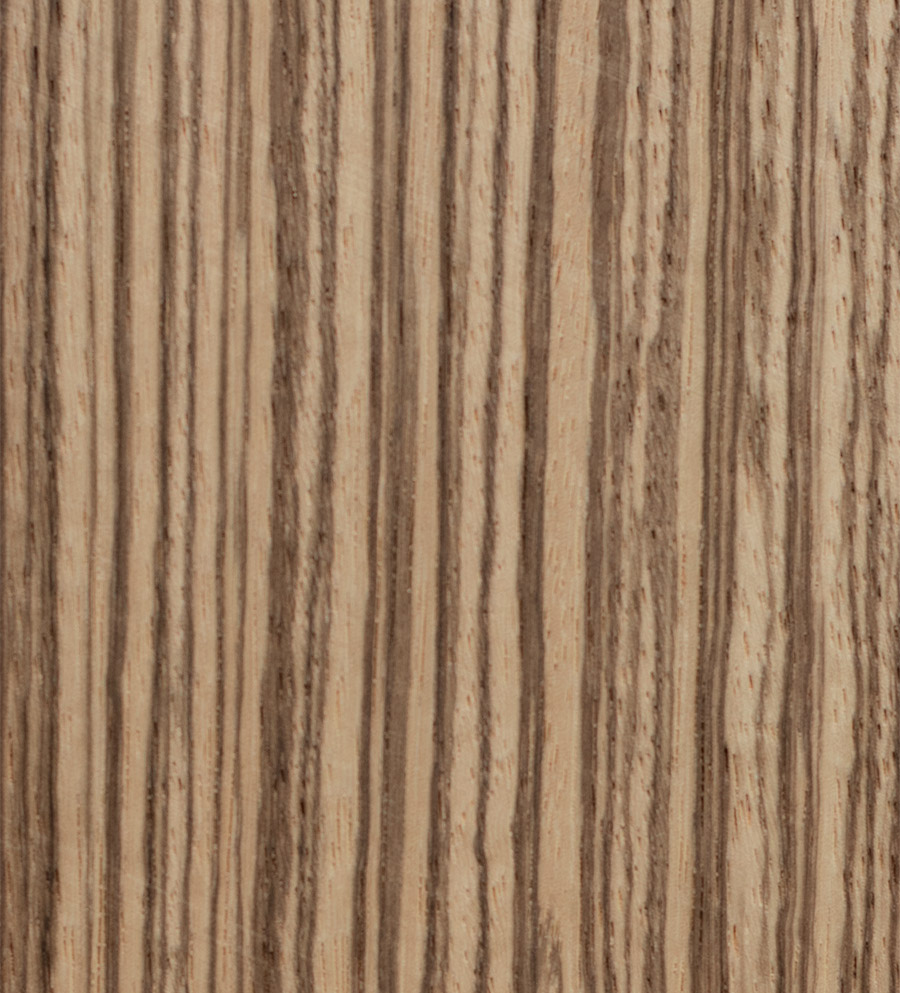
1. Scientific name: Microberlinia brazzavillensis
2. Wood origin: Exotic
3. Type: Deciduous
4. Color: Known for its yellow-brown bands and narrow dark streaks, the varying stripes cause the apparent association with zebras.
5. Hardness: Generally hard (Janka scale: 1,830 lbf)
6. Movement (DCC): Radial: 7.6*, Tangential: 10.8*
7. Modulus of elasticity: 2,374,000 lbf/in2
8. General use: Decorative veneer, turning, furniture.
9. Watch out for: Considerable warping when drying. If you get thick boards and resaw, plan on overcutting for several passes to minimize the board warping itself out of use. Interlocked grain can tear when sawing or planing. Cracks easily. Some people find the odor of zebrawood’s shavings and dust offensive.
10. Cost: It’s expensive but not as expensive as other exotic hardwoods.
11. Comments: The stripes we see result from the wood being quarter sawn. It might be difficult to obtain flat or rift sawn boards because people are looking for stripes. It is difficult to get a glass-smooth finish due to its open-pore grain. It is typically selected for its unique appearance.
*We could not find the Dimensional Change Coefficient for zebrawood and are supplying the only data we can find. Note that these numbers are on the high side, so expect zebrawood to have a lot of wood movement. For more information on wood, see the companion article, “Understanding Wood.” For more information on buying wood, see the companion article, “Upping your Wood Buying Game.”
How about jatoba?
Great summary. I wonder if you could provide the same information for Sapele. I did make an end grain cutting board out of it and it seemed to work well and my research did not uncover any unsafe issues regarding its use in this application.
Nice guide. The only issue I saw was the mixup of the scientific names of silver maple (Acer saccharinum) and red maple (Acer rubrum).
Cottonwood? What are best uses for it?
I was disappointed in no mention of pine and the difference between vintage heart pine and new wide grain pine
Good article very informative thank you
grew-up around sawmills, best short descriptions of woods I have seen. thank you Mike Keirns.